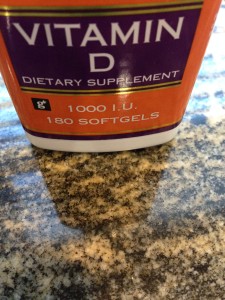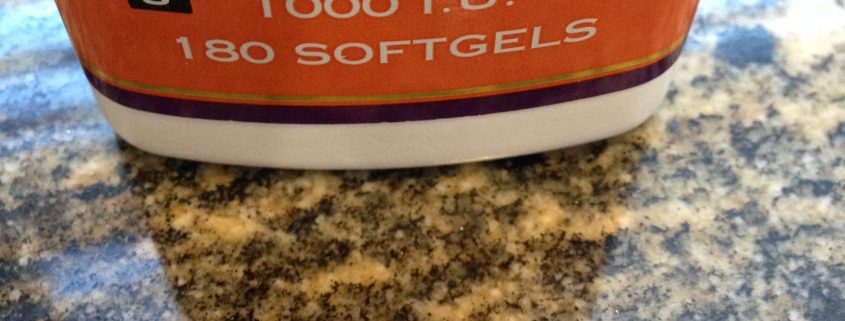Do You Get Enough Vitamin D?
 It is often assumed that Americans do not get enough vitamin D. I frequently hear stories about people going to their doctor for regular check-ups and come out with a recommendation to purchase nutritional vitamin D supplements in order to boost vitamin D levels in their bodies. The National Center for Health statistics conducted analysis for the years 2001 to 2006 that showed that Americans were not getting enough vitamin D. Maybe this is where the assumption comes from? Well these research findings spurred an increase in the recommended daily intake of 600 IU (international units) for anyone aged 1 – 70, and to 800 IU for adults older than 70 to improve bone health. These increases came via a panel at the Institute of Medicine in 2010.
It is often assumed that Americans do not get enough vitamin D. I frequently hear stories about people going to their doctor for regular check-ups and come out with a recommendation to purchase nutritional vitamin D supplements in order to boost vitamin D levels in their bodies. The National Center for Health statistics conducted analysis for the years 2001 to 2006 that showed that Americans were not getting enough vitamin D. Maybe this is where the assumption comes from? Well these research findings spurred an increase in the recommended daily intake of 600 IU (international units) for anyone aged 1 – 70, and to 800 IU for adults older than 70 to improve bone health. These increases came via a panel at the Institute of Medicine in 2010.
Newer analysis shows that about 2/3 of Americans are actually getting enough vitamin D.
In fact, ABC News reported on this recently. This may be surprising to some since vitamin D is considered the “sunshine vitamin” and we are in the dead of winter.
Vitamin D is an essential vitamin necessary to maintain bone health. This is because vitamin D is required for calcium absorption. Vitamin D is important for health in other ways including helping carry messages between the brain and body parts such in muscle movement. Vitamin D is also an important factor for the immune system to fight off invading bacteria and viruses. Vitamin D deficiencies result in bone disease, such as rickets in children and osteomalacia in adults.
The ABC News report detailed several ways to get adequate vitamin D. These included sunshine, natural foods sources, fortified foods, and supplements. Foods in which vitamin D occurs naturally include fresh fatty fish, such as salmon, mackerel, tuna, eel and trout. Canned tuna fish is also a good source. Mushrooms grown in ultra-violet light stimulate vitamin D production. This is because, like humans, mushrooms have a similar ability to convert sunshine to vitamin D. Portobello mushrooms are grown in ultra-violet light.
Other food rich in vitamin D include eggs, beef liver and cod liver oil. In eggs, vitamin D is found in the yolk, therefore, it is important to use or eat the whole egg. Beef liver and cod liver oil do not seem like appealing food choices; however, they do contain good amounts of vitamin D. Cod liver oil is often flavored with mint or citrus for increased appeal. It is also found in supplement form.
Foods fortified with vitamin D include milk, orange juice and cereal. Almost all types of cow milk in the U.S. are fortified with vitamin D. However, ice creams and cheeses are not fortified. Some yogurts and alternative milks are also fortified with vitamin D, however the amounts vary by brand. The same thing applies with orange juice, amounts vary. Cereals fortified with vitamin D are best consumed as low-calorie, whole grain versions for additional health benefits.
Supplements are a quick way to get the total amount of vitamin D all at once. However, if you are taking a supplement, you should be aware of how much you are also getting from food as well. Too much vitamin D can cause toxicity that result in nausea, vomiting, poor appetite, constipation, weakness and weight loss. Excess vitamin can also damage the kidneys since the kidneys are involved in converting inactive vitamin D to its active form.
While vitamin D is an important nutrient, it is essential to make sure you are meeting your recommended daily intake, but not exceeding it.
Now it’s your turn to take action: How will you increase your vitamin D intake this week?


Leave a Reply
Want to join the discussion?Feel free to contribute!